Made February 2023/Updated October 2023/November 2024
The purpose of this post is merely to catalogue counts of monthly reports of record highs (high maximums, high minimums, low minimums, low maximums) coming into the National Center for Environmental Information’s site and all related charts and graphs produced in my Excel files for data sets from Mexico. A monthly record report would be one for the most extreme temperature reading reported during one individual month during a calendar year. Each reporting station would only have 12 monthly records for high maximums (only one per month), for example.
I am in the process of constantly updating this data verifying the 2009 Meehl et. all surface Records published in Geophysical Science that I initiated from 2000-2009. Each individual count could be a tied surface record or one broken by several degrees Fahrenheit. Here is the link to the NCEI site:
https://www.ncdc.noaa.gov/cdo-web/datatools/records
More from NCEI:
“The daily records summarized here are compiled from a subset of stations in the Global Historical Climatological Network. A station is defined as the complete daily weather records at a particular location, having a unique identifier in the GHCN-Daily dataset.
For a station to be considered for any parameter, it must have a minimum of 30 years of data with more than 182 days complete each year. This is effectively a “30-year record of service” requirement, but allows for inclusion of some stations which routinely shut down during certain seasons. Small station moves, such as a move from one property to an adjacent property, may occur within a station history. However, larger moves, such as a station moving from downtown to the city airport, generally result in the commissioning of a new station identifier. This tool treats each of these histories as a different station. In this way, it does not “thread” the separate histories into one record for a city.
This tool provides simplistic counts of records to provide insight into recent climate behavior, but is not a definitive way to identify trends in the number of records set over time. This is particularly true outside the United States, where the number of records may be strongly influenced by station density from country to country and from year to year. These data are raw and have not been assessed for the effects of changing station instrumentation and time of observation.”
All counts include ties of records.
An updated 2016 study from Dr. Jerry Meehl indicates that the ratio from year to year will average around 15 to 1 by 2100 for the United States:
Per one of the authors of both the 2009 and 2016 studies, Claudia Tebaldi said “This climate is on a trajectory that goes somewhere we’ve never been. And records are a very easy measure of that.”
All of the data listed below is part of this one chart. So far, the ratio of monthly record high maxes to low minimums for the 2020s is higher than any other decade since the 1950s:

Here are the current monthly record counts per decade, which have gone into the prior charts:

*There is one big caveat with Mexican data.* Why the tail off of counts after the year 2012? “Mexico’s Servicio Meteorologico Nacional has had some pretty severe challenges in the last 20 years, so there are surely fewer stations today than there were in 2013. However, these tend to manifest as a ramp-down, rather than a mass closure,” according to Deke Arndt from NCEI. The outage is affecting ratios for the 2010s.
The 2020s:



In this genome blue colors represent cold months and red warm. Those months with counts close to a 1 to 1 ratio of highs to lows are colored black. I have opted not to catalogue data prior to 1950 since record counts decrease substantially prior to that year. Time stamps for when I last updated counts are located in the upper left-hand corner of each chart. Drop me a note if you see an error or if you have suggestions for improvements.

*The last individual four months from JUN 2023 to SEP 2023 have been record hot and colored purple. New for 2024. I’ve added monthly averages and anomalies from Mexican climate reports going back to 2013. To my knowledge, this data is not archived prior to that year.*
The 2010s:



*There is one big caveat with Mexican data.* Why the tail off of counts after the year 2012? “Mexico’s Servicio Meteorologico Nacional has had some pretty severe challenges in the last 20 years, so there are surely fewer stations today than there were in 2013. However, these tend to manifest as a ramp-down, rather than a mass closure,” according to Deke Arndt from NCEI. The outage is affecting ratios for the 2010s.
The 2000s:


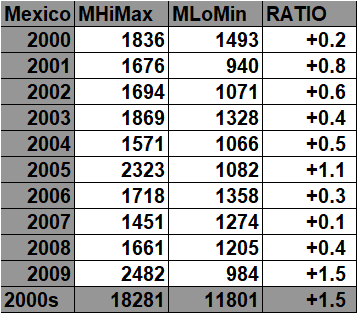


The 1990s:
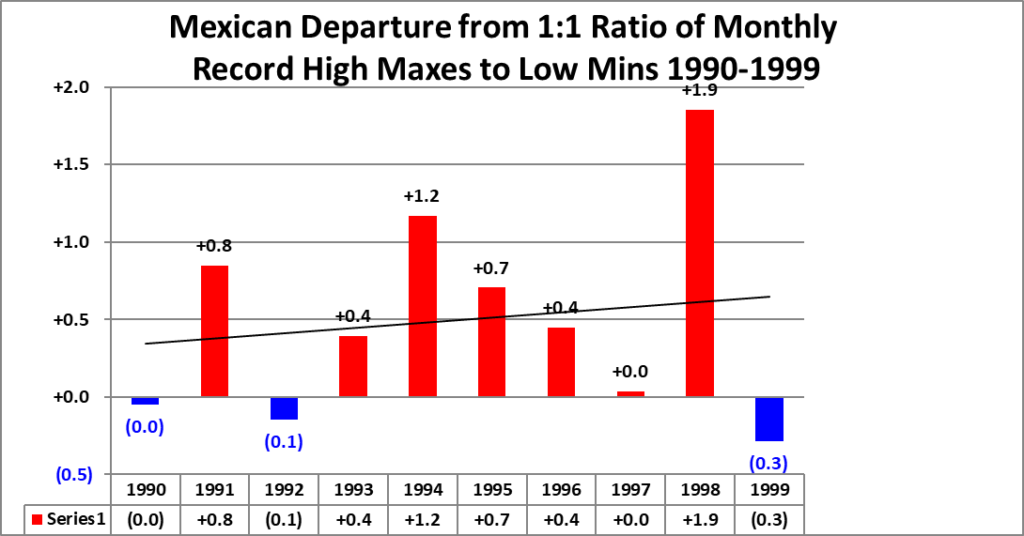
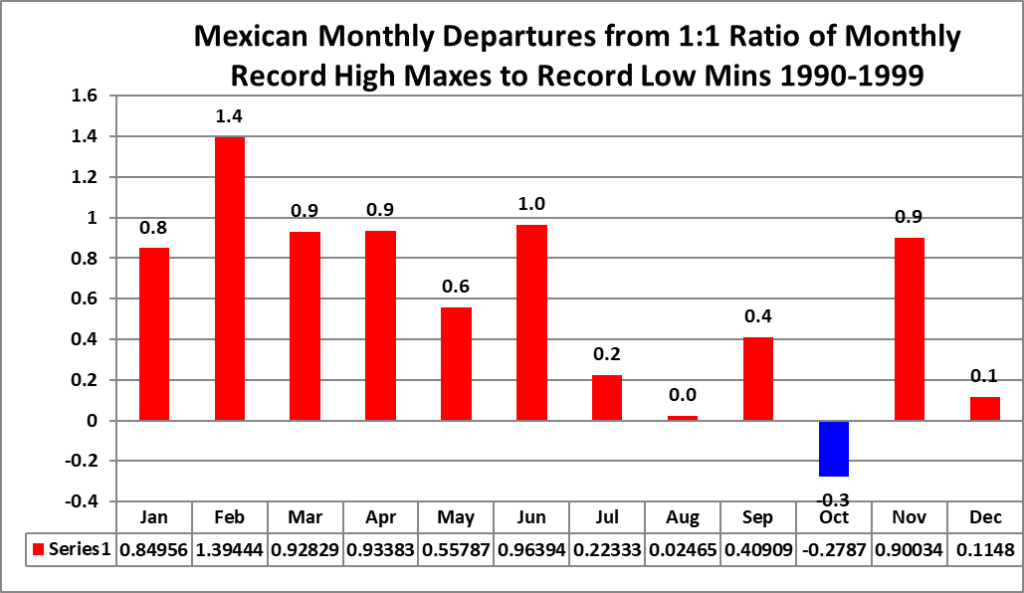



The 1980s:


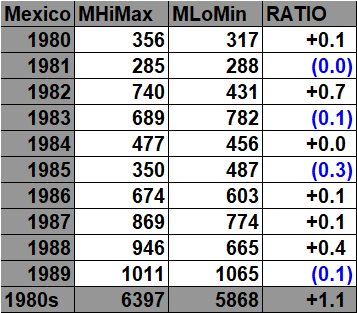


The 1970s:
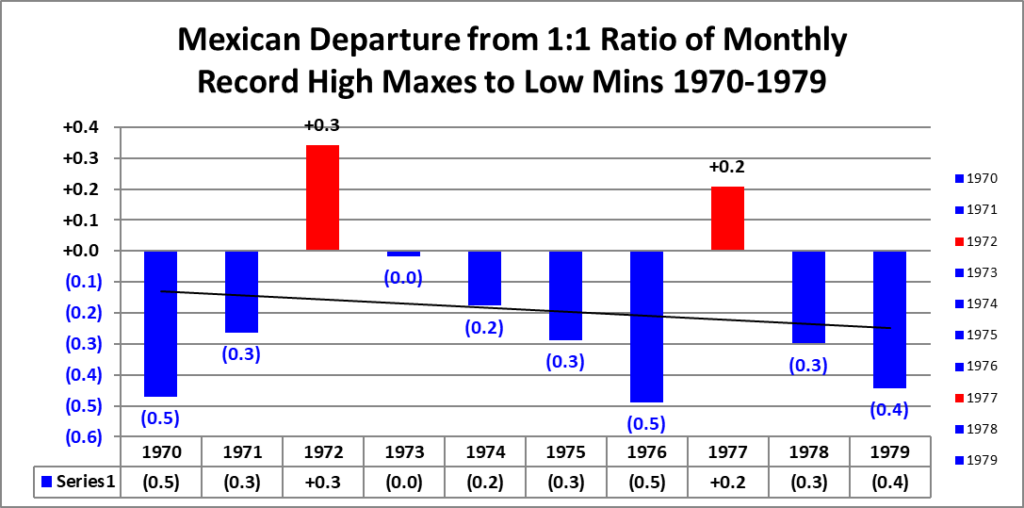

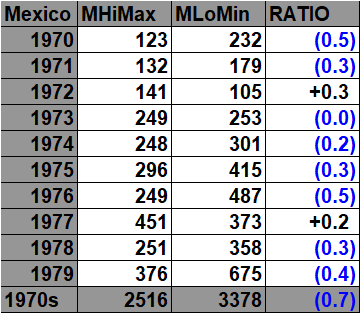


The 1960s:
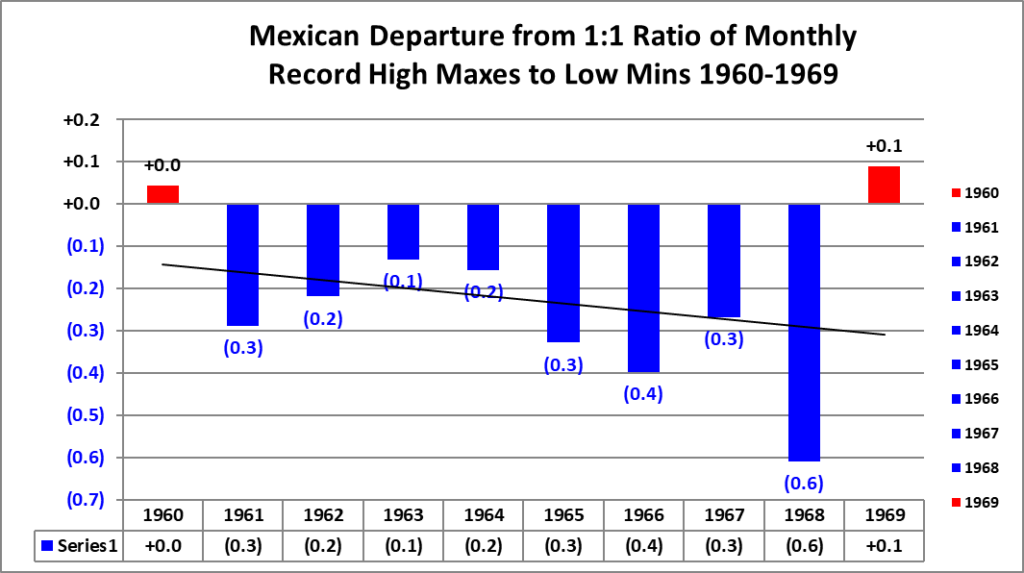




The 1950s:
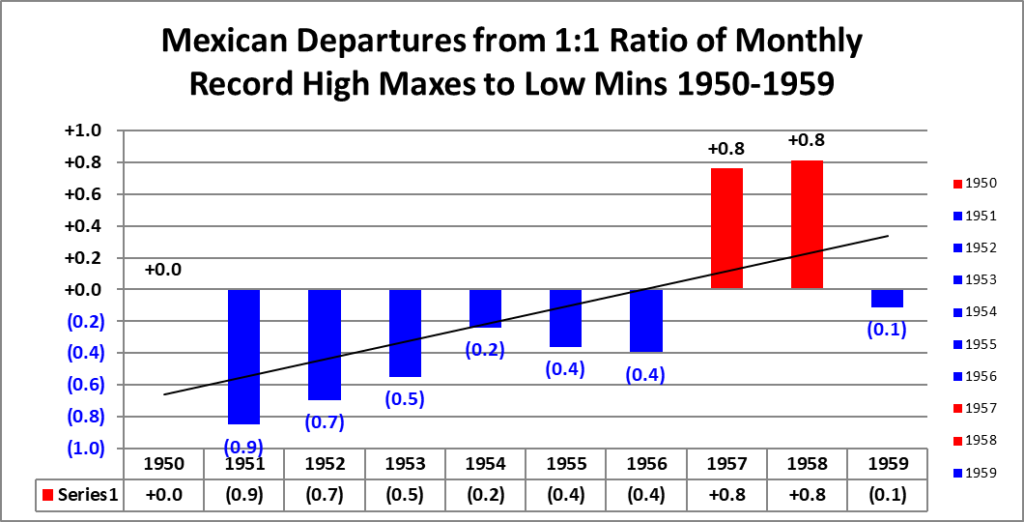

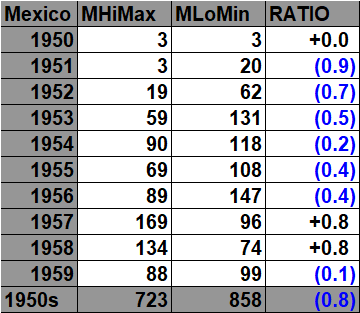


All of the data listed below is part of this one chart:

Here are the current monthly record counts per decade, which have gone into the prior chart:

The 2020s:
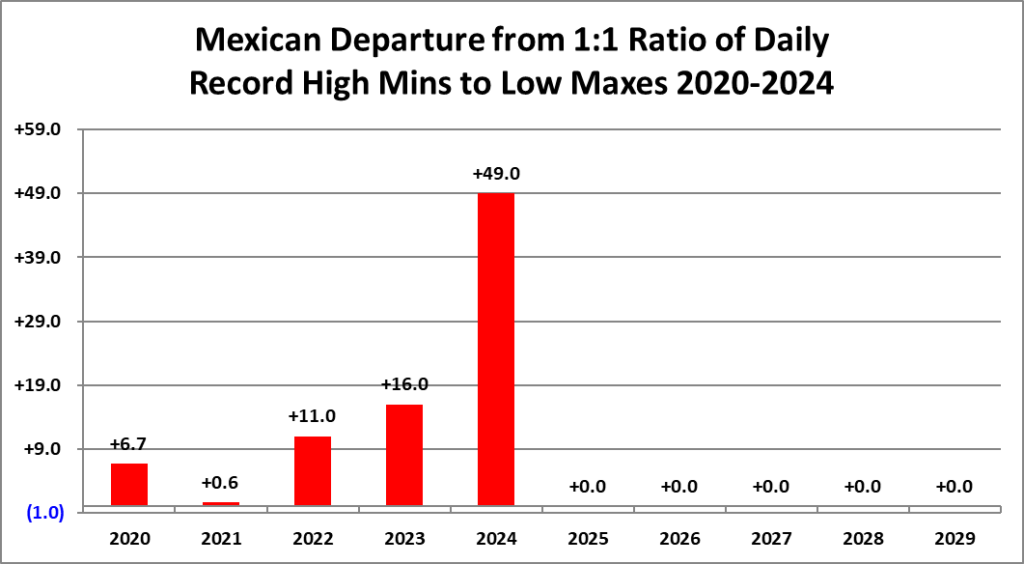


For the following data sets of record high minimums and low maximums blue colors represent cold months and red warm. Those months with counts close to a 1 to 1 ratio of highs to lows are colored black. I have opted not to catalogue data prior to 1950 since record counts decrease substantially prior to that year. Time stamps for when I last updated counts are located in the upper left hand corner of each chart. Drop me a note if you see an error or if you have suggestions for improvements (Likewise for daily high minimums and low maximums, tallies tail off significantly after 2013) .

*The last individual four months from JUN 2023 to SEP 2023 have been record hot and colored purple. New for 2024. I’ve added monthly averages and anomalies from Mexican climate reports going back to 2013. To my knowledge, this data is not archived prior to that year.*
The 2010s:


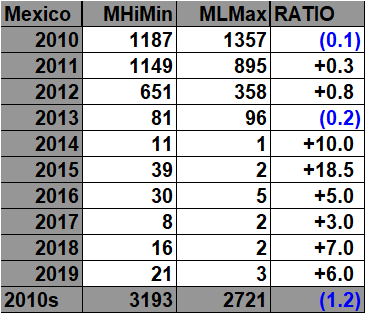

*There is one big caveat with Mexican data.* Why the tail off of counts after the year 2012? “Mexico’s Servicio Meteorologico Nacional has had some pretty severe challenges in the last 20 years, so there are surely fewer stations today than there were in 2013. However, these tend to manifest as a ramp-down, rather than a mass closure,” according to Deke Arndt from NCEI. The outage is affecting ratios for the 2010s.
The 2000s:


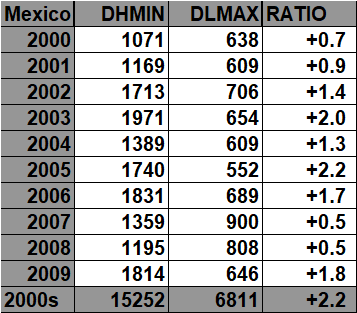


The 1990s:





The 1980s:
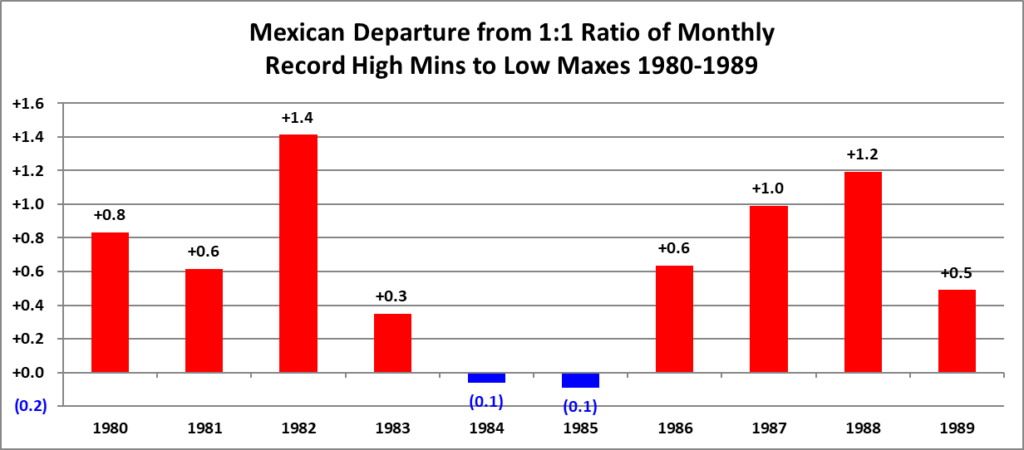

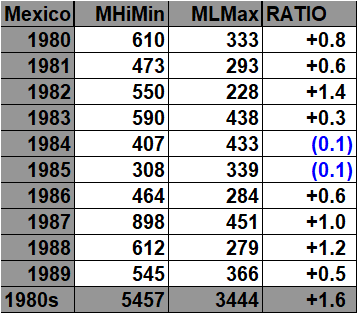


The 1970s:
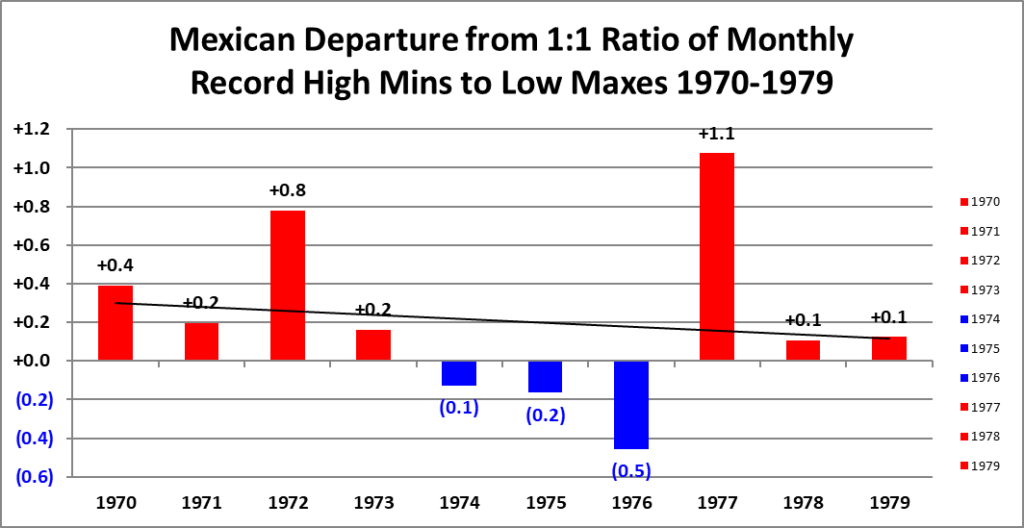




The 1960s:


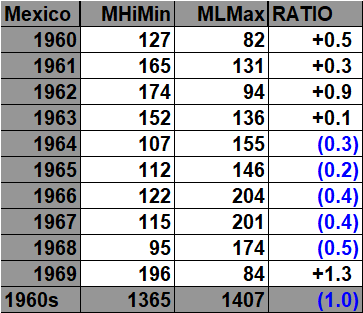


The 1950s:
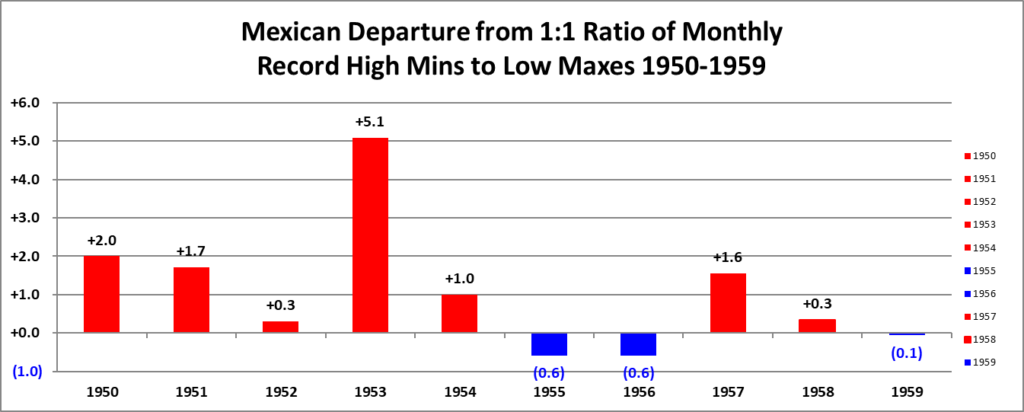




These are all of the NCEI monthly record Mexican counts back to January 1950.
The Climate Guy